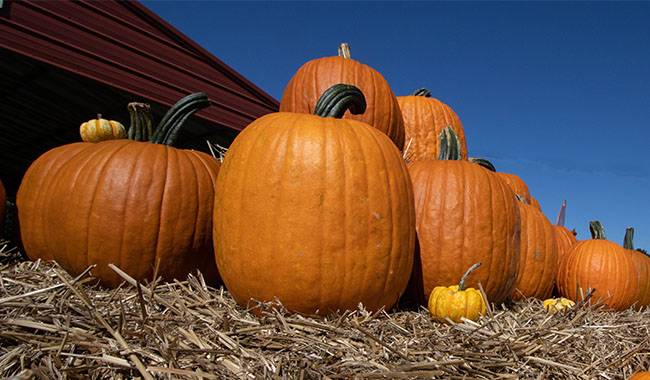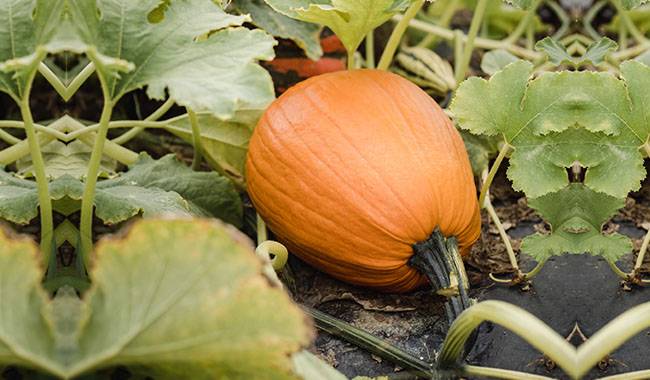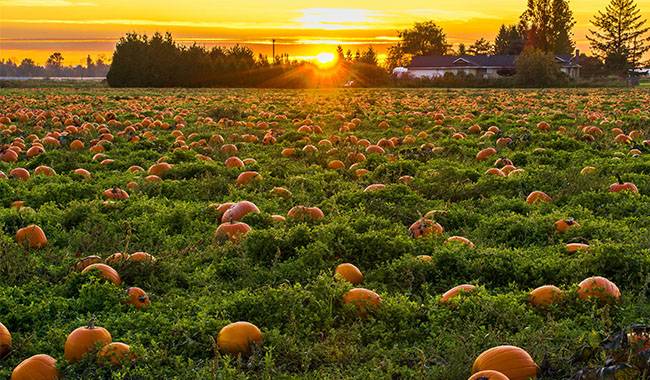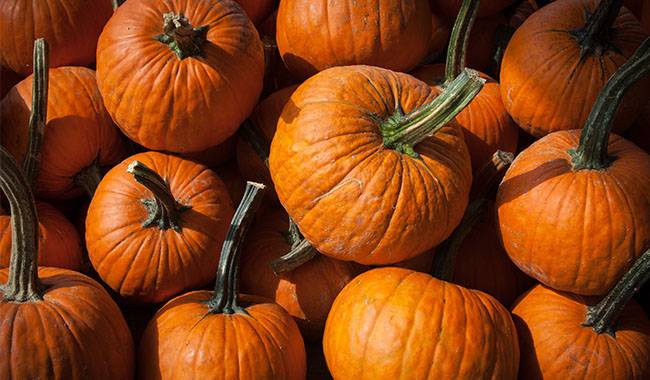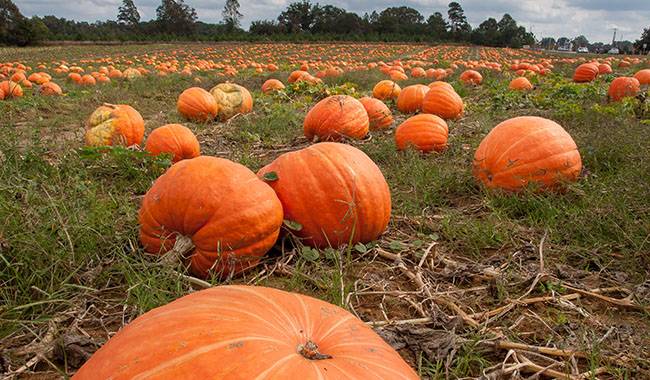
The pumpkin is considered by many gardeners to be the queen of the flowerbed. Not only because of its diversity in size, shape, and color, but also because of its excellent taste, useful qualities, and, as a rule, a pumpkin harvest.
Pumpkin contains high amounts of carotenoids, iron, various vitamins, and minerals. Because it can be stored for a long time, this vegetable keeps us healthy almost all year round.
If you have decided to grow pumpkins on your plot, you must be curious to know how to get the maximum yield from each pumpkin bush.
FOR A BIG HARVEST – HIGH-YIELDING VARIETIES
Before sowing pumpkins, you need to decide what you want to grow them. For raw, cooking, long-term storage, seeds or decorate your garden plot, various crafts, animal feed?
There is a diversity of pumpkin types and varieties, here are examples of the top five.
Miniature pumpkins
If you’re looking for a small orange pumpkin for your table, you’ll want to grow “Baby” pumpkins. These types of pumpkins are easily complemented by the “Baby” species, which appear similar in size but bright white.
It is easy to grow a mix of both by purchasing a harvest mix, which will usually contain about twenty-five seeds.
These seeds are fairly low maintenance compared to other pumpkins and can easily be grown in containers on your deck or balcony. Once they appear, you can use them for fall decorations or in a pie like any other.
Best of all, you can hollow them out and use them as bowls filled with applesauce, turkey stuffing, or soup at the Thanksgiving table.
Fall Golden Pumpkins
These pumpkins are prized for their infamous “precious yellow gene,” which means they turn golden weeks earlier than other pumpkins, and by harvest time, you’ll never be left with just green fruit.
At their peak, they turn a lustrous golden-orange color that will be very visible as long as they are on the vine. This variety is an excellent choice for northern climates because it can withstand early frosts, but it has been successful in gardens from Canada to Texas.
For this reason, it is the winner of the “Best Choice in America” award and is highly trusted for its beautiful pumpkin lights and pies. Each vine can be 12-20 feet long and each vine can produce up to 5 pumpkins.
Dill’s Atlantic Giant
If you’re looking to grow the largest, mother of all pumpkins, look no further than Dill’s Atlantic Giant pumpkins. These types of pumpkins can consistently produce 400-500 pounds of pumpkin, with the largest fruit ever produced weighing over a ton at 2009 pounds!
Today, competitive pumpkin growth has risen to an international level, so if you are interested in entering the competition, or even just competing locally, consider this variety.
Keep in mind that this pumpkin growing can be a huge effort as the vines can take up to 1200 square feet and require up to 500 gallons of water per week! In addition, you’ll have to watch out for soil-borne diseases, so be sure to carefully roll them onto cardboard or plywood to keep them safe as they grow.
That said, if the extra labor seems unwelcome, you can always grow a slightly smaller – but still huge pumpkin – with a few tips from the guru, and knock your neighbors’ socks off.
Sugar Pumpkin
This pumpkin is perfect for pie lovers – but you can also use them to make delicious puddings and custards. Most recipes will only rely on using pumpkin puree instead of canned pumpkin, which often requires sugar pumpkin because of its sweeter flesh.
Pumpkin puree is easy to make by roasting, deseeding and blending, and sugar pumpkins are especially easy to cook because they have much less stringiness and less water content than other varieties of pumpkin. The best fruits will grow a little smaller than traditional jack-o-lantern pumpkins, reaching about 6-8 inches in diameter at their peak.
This makes them a natural choice for backyard gardens, especially since they only need about 1-2 inches of rain per week. In addition, any problems, such as pests or diseases, can be easily solved, making these pumpkins a great choice for beginners.
Jarrahdale
Jarrahdale pumpkins are native to Australia but thrive in the climates of the southern United States. They are prized for their blue-gray rind, which when cut opens to reveal thick orange flesh. They can also keep longer than other pumpkins and if pickled can last up to a year in your pantry.
However, if you want to use them right away, you can roast them like any other pumpkin, just be prepared to taste something closer to pumpkin than pumpkin pie.
This species can grow anywhere from 6 to 120 pounds, but it is very sensitive to frost, so it’s best to start your seeds in April. They need plenty of room to spread and can’t be brought up on a trellis, so make sure you have plenty of room in your backyard.
Otherwise, they are fairly easy to grow and will produce amazing blue pumpkins, unlike any other variety.
The main condition when choosing a pumpkin variety – do not to be guided by the beautiful color or the size of the fruit. Taste quality does not depend on it. Carefully study the characteristics of the variety.
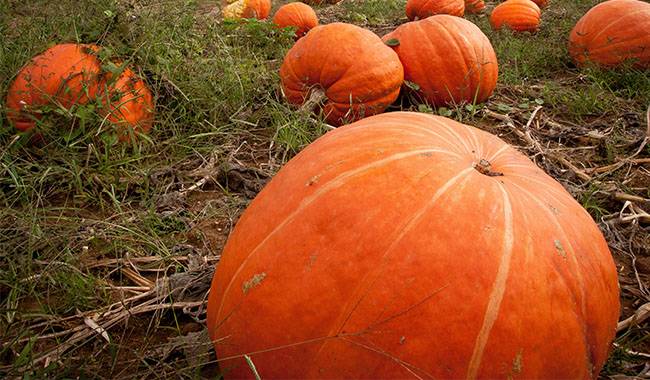
INCREASE THE GERMINATION AND YIELD OF SEEDLINGS
An interesting thing about pumpkin seeds is that the longer they are stored, the higher their germination rate and yield. In order to improve these indicators in young seeds, the following procedure can be used.
First, wrap the seeds in a dark cloth and heat them in the sun for 5-6 hours. Or at the same time, they are incubated in an oven at a temperature of 68-122°F (20-50°C).
Then, the pumpkin seeds are wrapped in gauze and poured into a water or ash solution at an air temperature of about 77°F (25°C) for 12 hours to swell.
Finally, the seeds were placed in the refrigerator for two days. Such a test increased the germination and yield of fresh seeds many times.
To speed up the process of fruit emergence and ripening, it is best to germinate pumpkin seeds before planting.
PREPARE A HOLE FOR PLANTING, NOT A BED
Pumpkins like fertile soil and preparing a well is easier than fertilizing a whole bed.
For a good crop, pumpkin holes should be prepared well in advance. The hole is 16-18inch (40-45 cm) deep, partially filled with manure or humus, mixed with organic fertilizer (chopped grass and weed stems without seeds).
Cover the top with about 2.4inch (6cm) of soil and water thoroughly. After about a week, the pumpkin seedlings are planted. After planting, the holes can be watered with a “Fitosporin-M” solution: 1 tablespoon per 5 liters of water.
The pumpkin comes from the tropics, so its best-growing conditions are light and heat. In sunny weather, the fruit grows twice as fast. Therefore, in the southern regions, pumpkin seeds can be planted immediately in the open ground.
In the central and northern regions, for a good harvest, choose early varieties or raise seedlings and plant them in the open field at the end of May (preferably – with temporary cover to prevent the return of frost).
Plants with long stems and large leaves need a large feeding area, and the size of the fruit depends on this. When planting pumpkins, the distance between the holes should be at least 24inch (60 cm). It is better if there is one plant per 1 square meter of soil.
CARE OF PUMPKINS – MINIMUM, BUT REGULAR CARE
If the soil is well prepared, fertilize pumpkins no more than 3 times a season. Mineral and organic fertilizers are used alternately. Feeding with manure is done with a solution of 1: 10 liters of water. The use of nettles in the fertilization of irrigation grass strengthens the plant and accelerates its growth.
Caution: Be very careful when fertilizing pumpkins with mineral fertilizers, especially those used for food. Pumpkins are good accumulators of nitrates.
TEMPORARY WATERING OF PUMPKINS
Water the pumpkin weekly until the first ovary is formed. Later, watering is reduced to once every two weeks in order not to cause the fruit to crack. It is best to use drip irrigation so that the water does not get on the leaves. Make sure that the water does not stagnate so that it does not cause rotting.
Near harvest, pumpkins are not watered or fertilized. Watering in this case will reduce the sugar content of the fruit and make it unpalatable.
SPROUTING AND PRUNING FOR MAXIMUM YIELD
Pumpkins have long stems. Once the first fruit is set, the stem grows further and the next ovary is formed on it.
The peculiarity of the plant is that after the formation of a new ovary, the development of the previous fruit stops, and all the nutrients flow to the last fruit, which in turn may not ripen because of its late appearance.
To prevent this, the plants are pruned by taking one or two nodes off the first ovary.
On a large-fruited pumpkin, you can plant no more than two full fruits. In addition, you save space for the development of other plants. Side shoots up to 2.8inch (7cm) long should also be cut off (stepped).
If the variety has small fruits, leave more fruits on one plant, up to 6-10.
As the pumpkin grows, thin the bush regularly, cutting off-dry, rotten leaves and leaves lying on the ground.
New roots can form where the plant’s stems come in contact with the ground, giving the plant extra water and nutrients and increasing production.
Attention! Do not move the stems during flowering and fruiting. This may cause the flowers to die or the fruit to stop growing.
PROPER HARVESTING IS THE KEY TO LONG STORAGE
The fruit should be harvested before the first frost and at night temperatures of not less than 10 degrees Celsius. At this time, the fruit stops growing and acquires its characteristic color. The stalks become thin and dry, the bark becomes hard, and a thumping sound is heard when the pumpkin is struck.
A sharp knife or knife handle is used to cut through the pumpkin.
The crop can be stored at room temperature, in a dark place. In a cool room at 50-53°F (10-12°C), pumpkins can be stored until the next harvest.
WHAT CAN I DO TO MAKE MY PUMPKINS GROW BIG?
For record lovers, it remains to add the following factors are necessary for weight gain.
- Additional feeding. Usually not only, nitrogen fertilizer, but also fertilizers containing potassium and phosphorus.
- Adequate sunlight and water.
- Good genes. Real giants grow from the seeds of similar giants.
However, giant pumpkins are not used as food. They have a water content of 90-95% and very little nutrients. They have a very thin layer of flesh and the pumpkin is almost empty.




